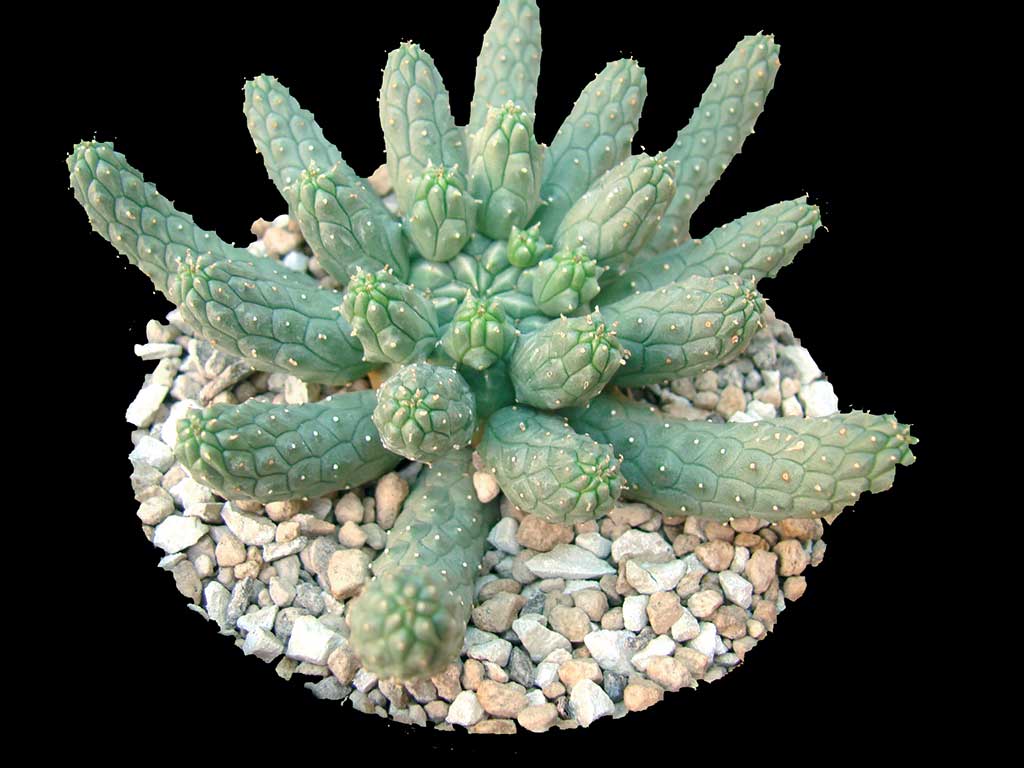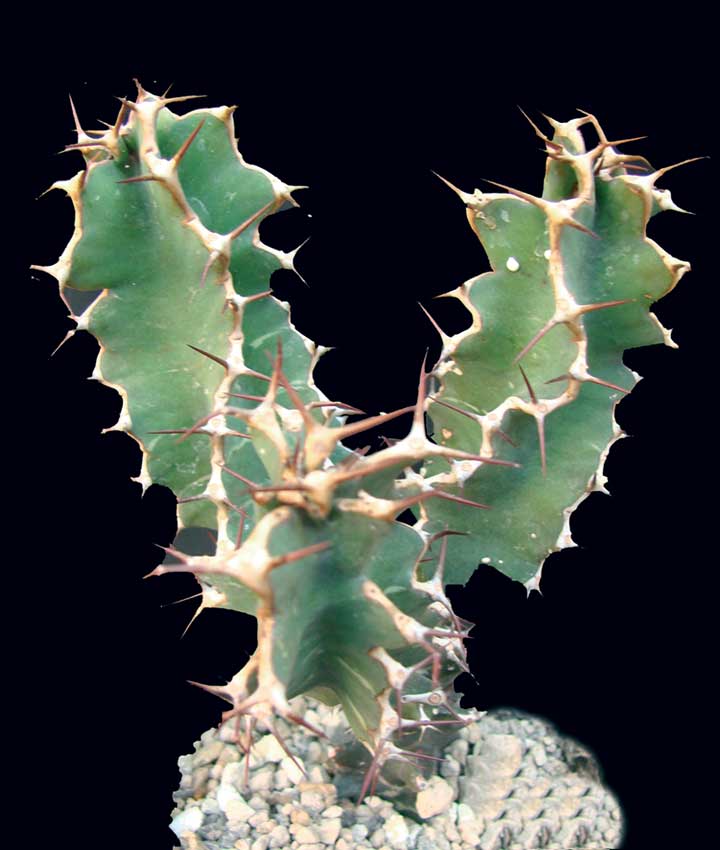About the genus
The genus Euphorbia consists of over 2,000 species that have very different modes of growth. They can range from small geophytic plants with underground tubers to shrubs of various sizes, right up to large trees several metres high.
Euphorbias are rarely grown for their flowers, which are usually very small. The whole flower structure can be quite complex but, in most cases, there are additional leaves known as cyathophylls complementing the flower make up.

We covered the Madagascan species last time and here we look at those from mainland Africa. It is difficult to be specific about how to grow euphorbias from the African mainland purely because of the vast size of the continent which has many different climatic conditions. For example, E. turkanensis can be found in the arid Turkana Desert in eastern Africa along with many other similar-looking species. The species coming from these regions, however, are now quite hard to come by and pose challenges in cultivation for even the most experienced growers.

How to grow them
Generally speaking, the species that are found growing in the southern part of Africa are more easily available and not so challenging. One of the best-known species that a lot of newcomers to the hobby will inevitably end up growing is E. obesa. This is grown by the millions in European nurseries and is the obvious choice as a starter, being a compact globular species with an attractively patterned body.
Some of the so-called Medusoid species are also easily available; look out for plants such as E. inermis or E. esculenta. There are also a number of short columnar plants with spiny bodies that are easy to come by and are quite easy to cultivate; species such as E. horrida or E. mammillaris spring to mind. Unlike the Madagascan species, most of the southern African species will survive easily with a much lower temperature. I would suggest however that a good safe low temperature is no less than 5°C provided that the plants are kept quite dry over the winter period. If the minimum temperature cannot be maintained then the easiest solution is to bring the plants indoors.

There are quite a few geophytic plants (those with subterranean tubers) from South Africa and they can be grown with some of the tuber exposed above the soil level. You can bury the tuber completely but it is essential that the growing medium is well-drained and does not hold a lot of water. Plants whose tubers are completely buried should produce a much stronger stem formation.
The growing season for most South African species is from spring through to late autumn. During this time the plants will need to be well watered but gradually start reducing the amount of water towards the end of September.
Most South African species with spiny bodies will grow in full sun but smaller plants and some globular species may prefer to be grown in shadier positions. Plants will respond well to most growing media, and they should be fed during the growing season with a half-strength balanced feed solution with every second watering.
Text and photos: Bob Potter
No part of this article may be reproduced without permission. Copyright BCSS and the Author 2022
